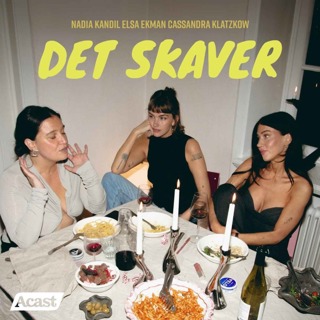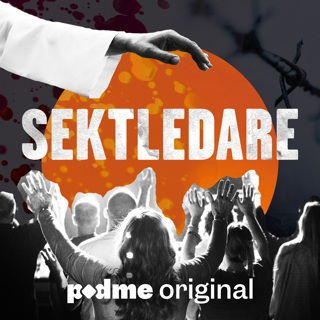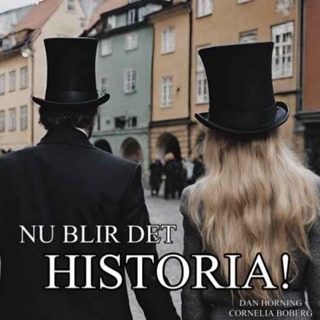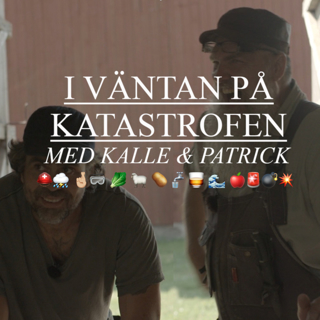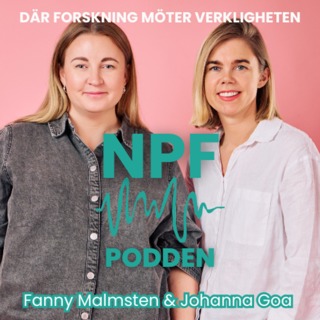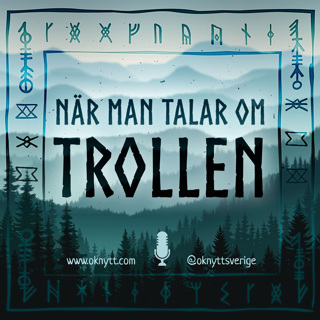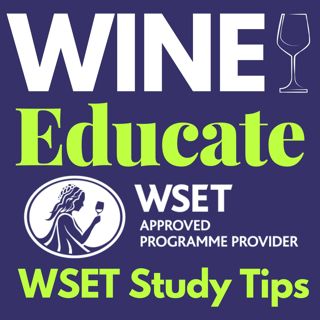
54. Wine Tasting Series: - Mini Wine Tastings You Can Do at Home - #6 Sweet Foods and Wine
Resources & Links: Sign up for the Wine Educate newsletter and download the companion tasting sheet: www.wineeducate.com/newsletter-signup How to Contact Us: For questions, speaking requests, or upcoming classes and trips, visit www.wineeducate.com or find us on Instagram @wineeducate. Episode Summary: In today's tasting episode, Joanne shares a practical, at-home exercise focused on how sweetness in food can dramatically affect the taste of wine. This is one of those structural components that's hard to memorize from a chart but easy to understand once you experience it. Using a dry white or red wine and something sweet—maybe a bite of chocolate—you'll explore how sweetness in food increases the perception of bitterness, acidity, and alcohol in wine, while reducing its fruitiness and body. Joanne walks through how this concept shows up in real-life dining situations (like ordering dessert after a bottle of red) and why you should always consider a dessert wine for sweet foods. She also explains why this lesson is relevant for WSET students at every level and how tasting exercises like this can lock in your learning for exam day. You'll also hear about a clever pairing strategy from a Bordeaux winemaker who served sweet wine with umami-rich dishes to create a beautifully balanced experience. Takeaway: Sweet food can rob a wine of its best qualities. Try this exercise at home and discover just how much sweetness changes your wine—and why pairing sweet with sweet is the key to a successful match.
1 Juli 6min

53. When is a "Special Bottle" Ready to Drink?
Resources & Links: Sign up for the Wine Educate newsletter to submit your question and get tasting sheets, study tips, and updates: www.wineeducate.com//newsletter-signup About the Episode: This week's listener question comes from Liz, and it's one many of us can relate to—how do you know when it's the right time to open a special bottle of wine? In this episode, I walk you through the key components that make a wine age-worthy—acidity, tannin, sugar, concentration, and complexity—and how proper storage conditions play a big role in how a wine matures over time. I also share strategies for checking in on how a bottle might be drinking now (even if it's not yours!) using tools like CellarTracker and Wine-Searcher. If you're sitting on a wine you've been saving for the "perfect" moment, this episode might help you decide whether to wait—or go ahead and pull the cork. What You'll Learn: Why most wines are not made to age and are best enjoyed young What structural and sensory traits give a wine aging potential How bottle variation and storage conditions affect aging How to use online tasting notes to guide your drinking window Why sometimes, it's worth drinking the wine now—and creating a memory Ask Your Own Question: Got something you'd like to hear about on the podcast? Leave me a voice note through SpeakPipe—the link is always in the newsletter. I'd love to hear from you. Thanks for listening, and don't wait too long—life is short, and the wine is probably ready.
26 Juni 8min

52. Wine Tasting Series: Mini Wine Tastings You Can Do at Home! - #5 Body & Milk
Resources & Links Subscribe to the newsletter to get the Body Exercise Handout: www.wineeducate.com/newsletter-signup Have questions or want to share how your tasting group is doing? Email me: joanne@wineeducate.com Episode Summary In this Tuesday Tasting episode, we're revisiting one of my favorite exercises for helping students understand a core component of wine tasting: body. This is a concept that comes up frequently in both Level 2 and Level 3 WSET exams, and it's something many students struggle to pin down confidently. We're stepping away from the wine glass—at least temporarily—and heading to the fridge. This episode walks you through a tried-and-true tasting experiment using skim, 2%, and whole milk to illustrate how body feels on the palate. It's a simple way to isolate that sensation of "weight," and it gives you a clear reference point that you can carry into your wine tasting practice. Whether you're studying for the exam or just want to fine-tune your palate, this is an exercise worth doing—and worth repeating. In This Episode Joanne breaks down how to approach the concept of body in wine and explains how alcohol, tannin, and sweetness all contribute to it. She shares her go-to "cheat sheet" for estimating body and guides listeners through a fun, low-pressure experiment using different types of milk to simulate the light-to-full body spectrum. She also touches on how to translate this into a wine tasting, offering examples of wines you can use to reinforce what you learned through the milk exercise. Plus, there's a reminder about wine tasting order and why it matters more than we think. If you're already subscribed to the newsletter, check your inbox for a printable version of the milk experiment, along with discussion prompts for tasting groups. And if you're not on the list yet, you can sign up anytime at wineeducate.com. Want to Share Your Results? Joanne would love to hear how this exercise goes for you or your tasting group. Just hit reply to the newsletter email—or send a note to joanne@wineeducate.com—and let her know what you discovered.
24 Juni 6min

51. What Is a Sommelier? Defining the Role in Today's Wine Industry
Resources & Links Connect on Instagram and join the conversation: @wineeducate Have a wine question for Joanne? Email joanne@wineeducate.com Episode Summary In this Thursday episode, Joanne digs into a frequently asked—and slightly spicy—topic: what exactly is a sommelier? Who gets to use the title, and how has the meaning shifted over time? She traces the word's origins from its Old French roots (spoiler: it involved pack animals) to its evolution in aristocratic households and, eventually, the modern fine dining scene. Drawing from respected sources like Jancis Robinson's Oxford Companion to Wine, Joanne breaks down the traditional definition—and then explores how that definition is being stretched today. With the rise of formal certifications (like CMS and WSET), social media, and pop culture (hello, Somm), the title "somm" is now being used far beyond the restaurant floor. But is that a problem? Or just part of natural language evolution? Joanne plays devil's advocate, shares some historical perspective, and invites you to weigh in. Whether you work in a restaurant, retail shop, tasting room, or classroom, this episode offers food for thought on how we define roles in the wine industry. In This Episode: The origin and history of the word "sommelier" The traditional definition (and who sets it) The modern shift: somm as a role vs. somm as an identity How wine professionals in education, retail, or distribution fit into the picture Why the term can be controversial—and why it still matters A call for listener thoughts and discussion on Instagram Join the Conversation Have an opinion about the word "somm"? Find the discussion post on Instagram @wineeducate and share your thoughts. This is one where we want to hear from you.
22 Juni 6min

50. Wine Tasting Series: Mini Wine Tastings You Can Do at Home! - #4 Oak Aromas & Flavors
Resources & Links Access the Oak Aroma Kit PDF, wine examples, and tasting group prompts by signing up for the newsletter at www.wineeducate.com/newsletter-signup How to Contact Us Email Joanne directly at joanne@wineeducate.com to share feedback, questions, or episode ideas. Episode Summary Welcome to Episode 50 of the Wine Educate Podcast. It's a milestone week—Joanne just had a birthday, and we've reached our 50th episode. To mark the occasion, this episode brings you a fun, practical exercise to help improve your tasting vocabulary, especially for those studying for the WSET Level 3 exam. Today's topic is oak aromas and flavors—one of the most commonly underdeveloped sections of student tasting notes. Joanne explains why "oak" is not a sufficient descriptor and walks you through how to build your own Oak Aroma Kit using things you likely already have at home. From vanilla extract and baking spices to chocolate, toast, dill, and even suntan lotion, this is a creative way to get those key aromas into your memory before the exam. She also shares tips for using your new kit in a tasting group and how to tie these aromas back to real wine examples, including wines that clearly express American oak and French oak. In This Episode Why generic terms like "oak" cost you points on the WSET exam A walkthrough of each aroma listed under the Oak cluster in the Level 3 SAT How to assemble your own oak aroma kit with household items How to turn it into a tasting game with friends or classmates Where to find wines that highlight oak character for comparison A special listener request: Joanne wants to hear from you Episode Homework Sign up for the Wine Educate newsletter to receive the Oak Aroma Kit PDF Gather the kit items from around your house and start practicing Share the episode with your tasting group and try the recall game Taste and compare a wine that shows clear oak character—American and French Email Joanne and let her know what episodes or topics you've enjoyed most Looking Ahead The tasting series continues next week with more exercises to strengthen your sensory memory and build confidence for the exam. Stay tuned, and as always, thank you for being part of the Wine Educate community.
17 Juni 9min

49. How to Order Wine in a Restaurant: A Stress-Free Guide
Resources & Links: Join the newsletter to get updates on new episodes, study tips, classes, and travel opportunities. www.wineeducate.com/newsletter-signup How to Contact Us: Email: joanne@wineeducate.com Website: www.wineeducate.com Instagram: @wineeducate In this episode of the Wine Educate Podcast, Joanne shares practical advice for one of the most common wine anxiety moments: choosing a bottle at a restaurant. Whether you're a casual enthusiast, a corporate host, or the designated wine person in your friend group (because you took one WSET class!), this episode is for you. What's in This Episode: Bottles > Glasses (Most of the Time): Why ordering by the bottle is often better for a group—and more economical. The Sommelier Is Your Friend: How and why to talk to the som ahead of time if you're hosting a dinner or corporate meal. They want to help. Be Mindful of the Group: Consider that not everyone will drink, and people may be eating different dishes—versatile wines are your friend. When the Wine List Is Meh: If the restaurant list is uninspired or hard to navigate, go for tried-and-true options: Champagne or dry rosé from Provence are nearly always solid choices. Buy Time Gracefully: Not ready to decide? Order a glass of bubbles while you peruse the list without pressure. Value Regions to Know: Rhone and Loire Valley often offer great wines at great prices—look there if you're unsure. Final Takeaway: Wine is about enjoyment. Have fun, trust your instincts, and take a chance—you might discover something new. Thanks for Listening! Don't forget to subscribe, leave a review, and share the podcast with a wine-loving friend. And if you have a question you'd like Joanne to answer on a future episode, just reply to the newsletter or leave a voice message!
12 Juni 8min

48. Wine Tasting Series: Mini Wine Tastings You Can Do at Home! – #3 Sparkling Wine Styles
Wine Educate Newsletter – Sign up for exclusive content and class/trip updates www.wineeducate.com/newsletter-signup In this episode of Wine Educate, host Joanne Close dives into the bubbly world of sparkling wine—specifically two production methods you'll encounter in both WSET exams and your favorite wine shops: the Traditional Method and the Ancestral Method (also known as pét-nat). You'll learn: The step-by-step process of how Traditional Method wines like Champagne and Cava are made How pét-nat wines differ, including their natural fizz and sediment (aka fondo) Why Limoux might've made sparkling wine before Dom Pérignon (controversial, but fun!) Tips on what to buy, how to taste, and what to discuss in your study or tasting group What "snow globing" a pét-nat means—and whether you should try it This episode is part of the Wine Tasting Series: Mini Wine Tastings You Can Do at Home!—a fun, educational way to build your sensory memory and tasting confidence. Resources & Links: Sign up for the Wine Educate Newsletter to get the Episode 48 tasting worksheet, wine suggestions, and group discussion prompts Learn more about WSET classes with Wine Educate Explore upcoming 2026 trips How to Contact Us: Website: www.wineeducate.com Email: joanne@wineeducate.com Instagram: @wineeducate
10 Juni 13min

47 Heat-Damaged Wine: Signs, Causes, and How to Protect Your Bottles
Resources & Links Sign Up for the Wine Educate newsletter, the best way to get tasting PDFs, class updates, and trip info www.wineeducate.com/newsletter-signup Episode Summary It's getting hot out there—and it only takes a few hours of high heat to seriously damage a bottle of wine. In this episode, Joanne explains what heat damage actually does to wine, how you can spot it, and what you can do to protect your bottles at every stage—from delivery trucks to the trunk of your car. She shares real-world examples from the wine shop (including those dreaded summer deliveries), explains why most wineries won't ship wine in summer, and offers smart tips for protecting your bottles—including her golden rule: treat wine like you would a side of salmon. Whether you're a wine student, a collector, or just picking up a few bottles for dinner, this is an episode you don't want to miss. Topics Covered What heat damage does to wine (flavor, structure, and cork integrity) How quickly heat damage can happen (hint: hours, not days) What to look for when receiving wine shipments or shopping retail Why wineries pause shipping in summer How to safely transport wine in a hot car Tips for storage, delivery tracking, and protecting your wine year-round
5 Juni 9min



